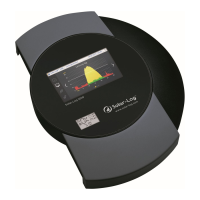146
Feed-In Management
Dynamic control for different module orientations
Depending on the plant, there might be different module orientations. To integrate these differences with
the active power, the switch "Dynamic control for different module orientations" needs to be activated
(deactivated by default). This switch is located in the Feed-In Management | Active Power menu. Acti-
vate this.
When this option is activated, different reduction commands are sent to the inverters, e.g. taking their ori-
entation into consideration, to maximize the amount of power fed into the grid without exceeding the limit.
The advantage here, for example, is that when some inverters are performing below a 70% limit, the output
from other inverters can be adjusted above the 70% to balance the final output to 70%.
24.2.1 Active power deactivated
When this menu item is selected, active power is deactivated. After that, the controllable interfaces can be
selected when control is via the Modbus PM or via a PM Profile.
24.2.2 Remote controlled active power reduction (only Solar-Log™ PM+)
This option should be selected if you want the active power reduction to be remotely controlled by the
grid operator.
To enable this function, a ripple control receiver or similar device is required. Typically, these devices are
provided by the grid operator for a fee.
The type of ripple control receiver or telecontrol technology used depends on the level of development of
the respective grid operator. The control signals emitted by the grid operator are converted to potential-
free signal contacts by the ripple control receiver and can be evaluated by the Solar-Log™ PM+ models via
the digital PM+ interface.
Note!
The function of the PM+ interface is only possible when the contacts of the ripple control
receiver are potential free and are wired with a supply voltage of 5VDC from the PM+
interface.
Examples of ripple control receiver connections and the corresponding configuration are in the chapter
“Appendix“ .

